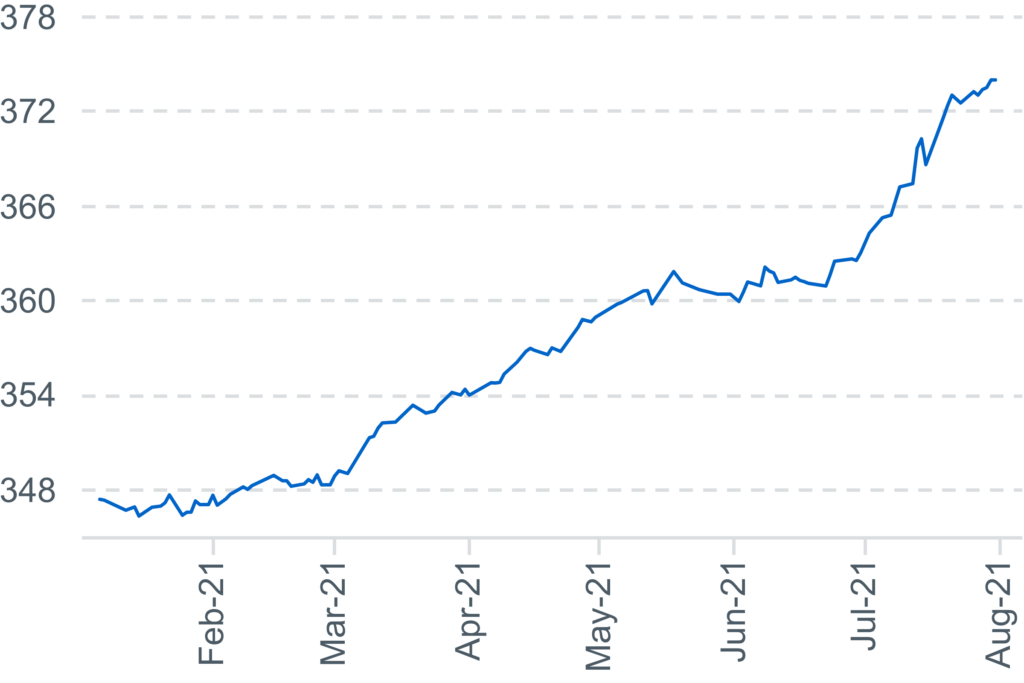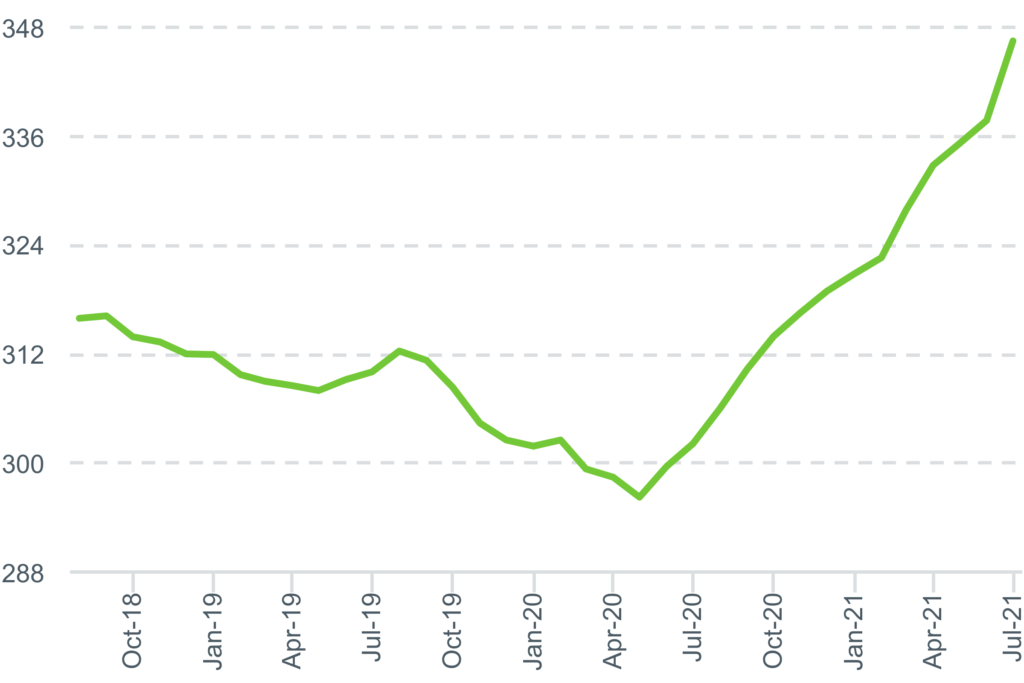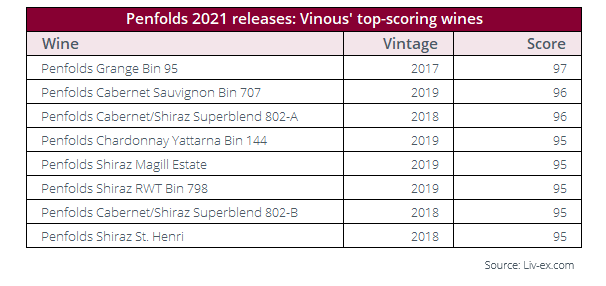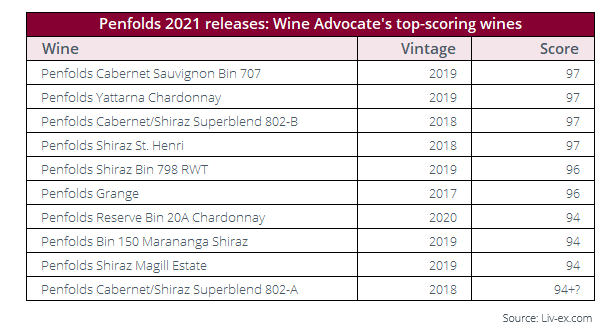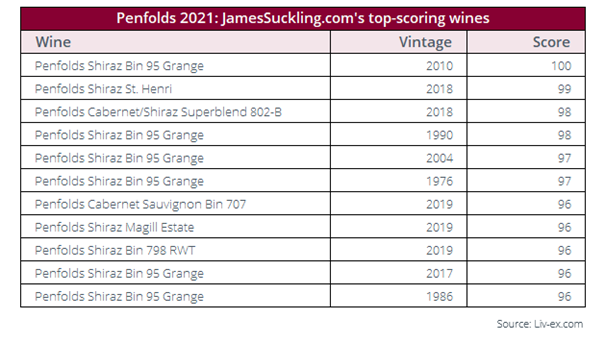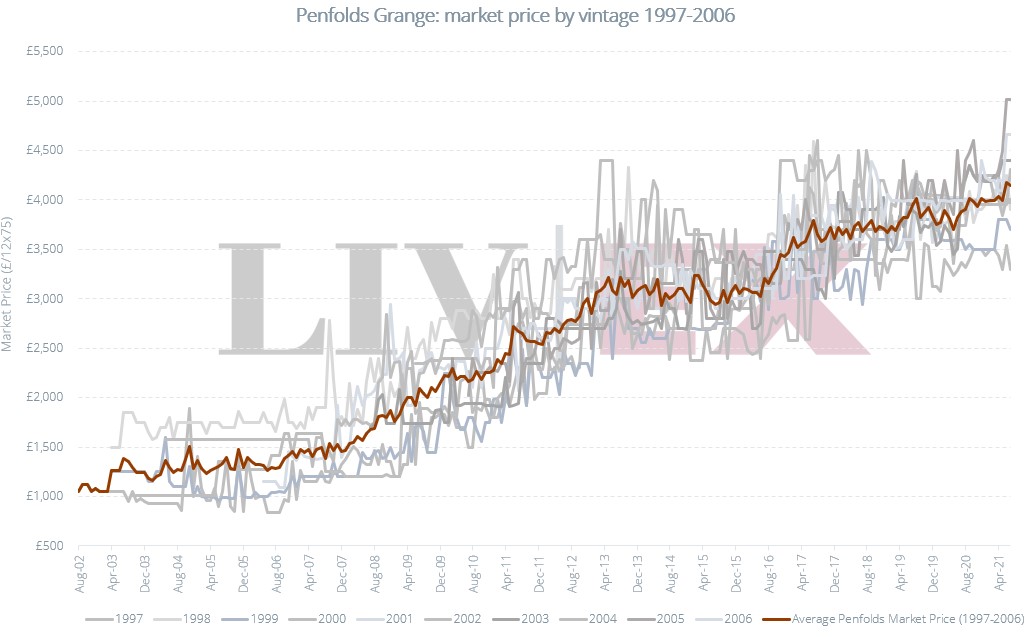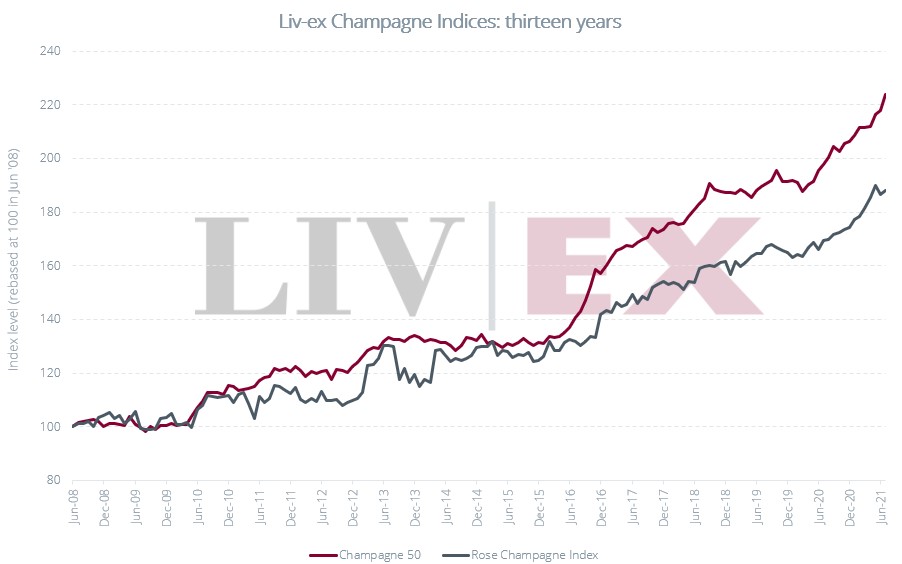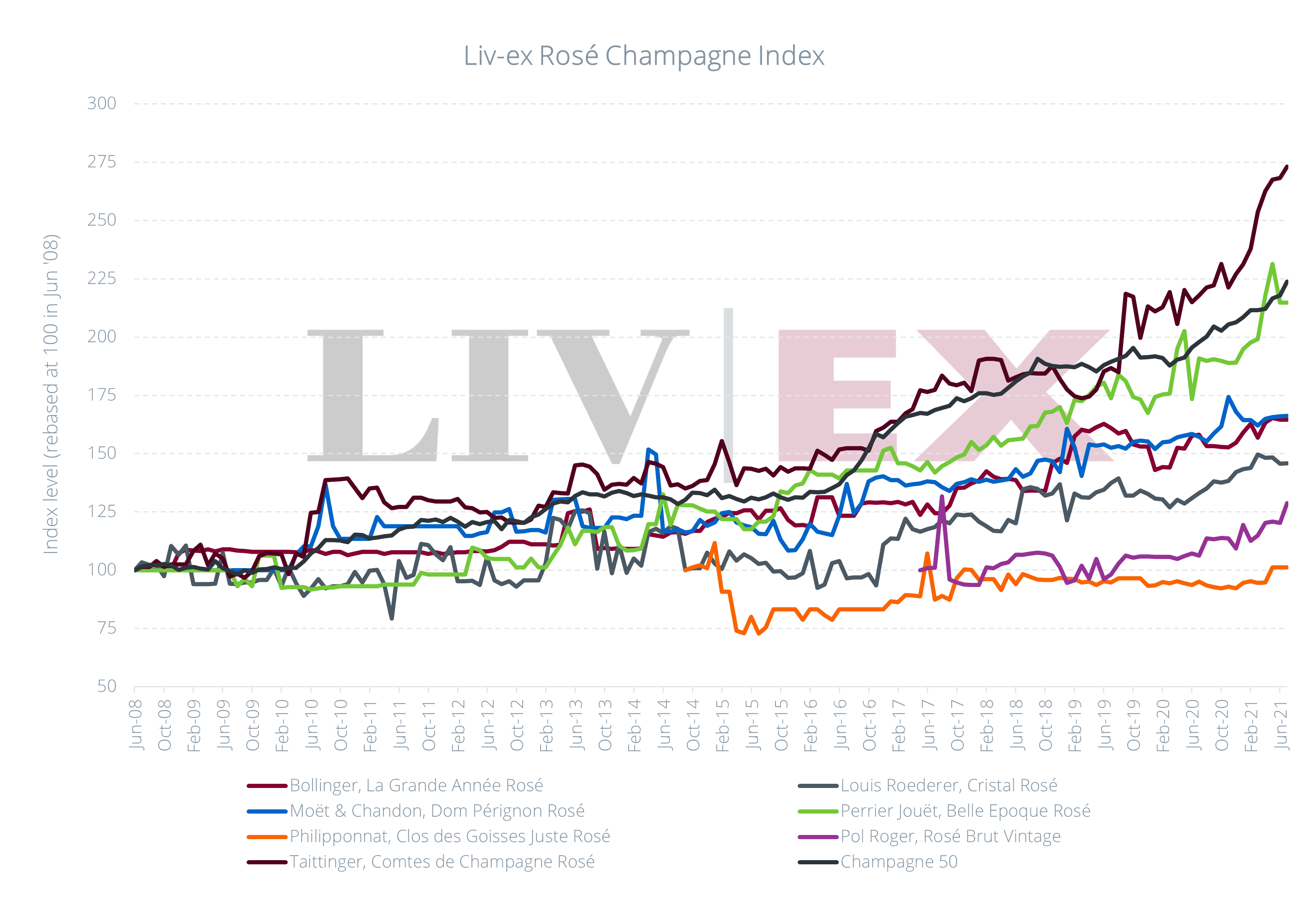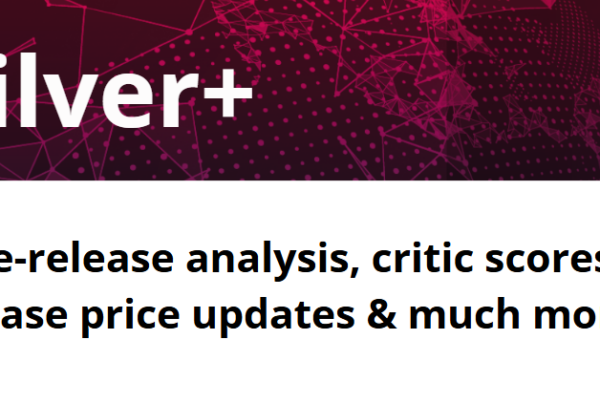Print and read offline instead.
20 years of fine wine insight
The Liv-ex 100 index – the industry benchmark – celebrated its 20th anniversary this July. The index was officially launched in December 2003 and backdated to July 2001. Tracking the movements of the 100 most sought-after wines on the secondary market, it provides insight into its overall health.
The Liv-ex 100 rose 2.6% in July to close at 346.57, just 5% off its all-time high, pushed by particularly strong performances from Champagne and Burgundy.
The broadest measure of the market, the Liv-ex 1000, rose 1.3%, marking its eleventh month of consecutive gains and an all-time high. The Champagne 50 was the best-performing Liv-ex 1000 sub-index in July, up 2.7%. Meanwhile, the Burgundy 150 is the best-performing regional index year-to-date, having risen 1.6% last month. More milestones were hit last month – the 100,000 wine was added to the LWIN database, which contains free detailed information on various wines and spirits.
The market continued to broaden in July, with the number of distinct wines (LWIN11s) trading up 8% on June. In terms of monthly regional share, Burgundy’s increased from 16.6% to 22.4%, Bordeaux from 47.8% to 48.7%, and Champagne from 6.8% to 7.4%. Italy dipped from 16.8% to 11.6%, the USA from 4.1% to 3.9% and the Rhône from 4.7% to 3.7%. The ‘others’ category accounted for 2.3% in July, helped largely by Australia (0.7%).
- Liv-ex 50
- Liv-ex 100
News
The UK trade welcomed the news that VI-1 forms are to be scrapped entirely for both wines imported from the European Union and non-EU countries. The WSTA called the move “a victory for common sense as well as being great news for the UK wine industry and UK consumers”. Liv-ex’s James Miles explained why this might lead to more choice and better prices, boasting the fine wine market’s diversity and appeal.
Australian auctioneer Langtons sold a bottle of 1951 Penfolds Grange for a record A$142,131. The previous record for the inaugural vintage of Grange was A$103,000, set just last year.
Terrible flooding hit parts of France, Belgium, Luxembourg and Germany in July. The Ahr Valley in Germany was particularly badly hit, with many wineries seriously damaged. German wine body theVerband Deutscher Prädikatsweingüter (VDP) has set up a relief fund for those affected.
The owner of Château Haut-Brion, Domaine Clarence Dillon, has bought Château Grand Pontet in Saint-Emilion. It is thought the 14-hectare property will become part of the group’s estate there, Château Quintus.
Critical Corner – Penfolds 2021 Collection
Penfolds – Australia’s leading fine wine brand – released its 2021 collection last week, coinciding with the 70th anniversary of its Grange label. Major critics tasted the wines ahead the global launch.
Vinous
Vinous‘ critic Josh Raynolds reported that the 2021 “Penfolds collection consists of all of their icon bottlings, including a few surprises”. The “most significant two”, according to Raynolds, were Superblend 802-A, which he awarded 96-points, and Superblend 802-B, which received 95-points.
Raynolds was full of praise for the 2021 Riesling Bin 51 (94-points) which he called “easily one of Australia’s best renditions of the variety”. His top-scoring wines, awarded 95-points and above, can be found in the table below.
Raynolds also remarked that the current trade war and ensuing tariffs (up to 220%) on Australian wine mean that “the Chinese allocation is going elsewhere, making these wines more available for now”. Upon the tariff announcement back in April, we looked at what losing the Asian market meant for trade of Australian wine.
The Wine Advocate’s Joe Czerwinski also got a preview taste of the collection, and his report included numerous value recommendations. Czerwinski noted that “while not everyone will (or can) get on board to spend US$150 for a bottle of Yattarna, readers shouldn’t overlook the Bin 311 Chardonnay, which incorporates numerous lots that were culled from Yattarna and retails for a much more competitive $40”.
He also mentioned the two new “super blends” 802.A and 802.B, remarking that “collectors for whom money is no object will no doubt enjoy comparing and contrasting them over the next several decades”. His favourite wines, including 802.B with 97-points, can be found in the table below.
James Suckling
Contributing editor Nick Stock tasted the collection of five different vintages, the two limited-release wines from 2018 and Grange vintages dating back to 1965 for JamesSuckling.com.
Stock observed that the 2017 vintage of Grange which marks the wine’s 70th anniversary is “only the seventh release of Grange that is 100% Shiraz”. He described it as “energetic and fleshy”, “a wine that leans toward boldness with plenty of extract, yet it is quite approachable”.
He noted that, “next year’s 2018 Grange is set to be a blockbuster”, judging by the high quality of the 2018 reds released to date. According to Stock, “the 2018 St. Henri Shiraz is the star of this year’s release”. The wine received 99-points – his highest score for a wine in the 2021 collection.
Stock’s top-scoring wines, tasted for the report including vintages outside the 2021 collection, can be found in the table below.
Explore the range of Penfolds Grange LIVE opportunities on the Liv-ex platform here.
Chart of the Month – Penfolds’ Progress
Penfolds Grange has been the icon wine of Australia since the early 1950s. It has also been the top traded Australian wine (LWIN7) on the secondary market for eight of the past 10 years.
Due to the popularity and liquidity of Penfolds, the 2010 vintage is a component of the Liv-ex Fine Wine 100 and the sole representation for Australia in the index.
As seen in the chart above, for the 10 vintages dating from 1997-2006, price trends, less monthly volatility, clearly move upwards. A case of Penfold’s Grange will cost you between £3,250 per 12×75 and £5,000, whereas, in the early 2000’s, all physical cases would have been available for purchase for less than £2,000 per case.
Penfolds Grange was also included in the 2017 Liv-ex Classification which was the first year that the Classification moved to a global ranking. It has since maintained its position as a Tier 1 wine and is set to be re-classified later this month.
Major Market Movers
Wines from the Lafite stable were the market movers in July. Four of the five were Lafite Rothschild with a single vintage of its second wine, Carruades Lafite 2015, breaking up the mix. The gains for Lafite were largely around classic “off” vintages.
Lafite Rothschild was a major driver in the performance of the Fine Wine 50 in July. The index rose 3% in its largest single monthly gain since late 2016. In the Liv-ex 1000, 23 of the 24 wines from the Lafite stable saw gains.
Final Thought – Introducing a new Champagne index
Champagne has emerged as one of the best bets in fine wine investment in recent years. A winning combination of brand power, a luxury image, accessible prices and global availability has driven up demand for leading grandes marques.
The Champagne 50 index, which tracks the most recent vintages of nine leading Champagne labels, is up 13% over the last year, 18% over the last two years and 56% over the last five.
This is a better performance than its parent index, the Fine Wine 1000, as well as the Fine Wine 100 and the First Growths as measured by the Fine Wine 50, over the same periods.
The Champagne 50 also proved the best-performing sub-index in July, rising 2.7%, while a total of 36 distinct Champagnes (LWIN11s) rose in value that month as well.
The best-performing Champagne was Dom Pérignon’s 2004 rosé, up 12%. This result neatly highlights a growing trend within Champagne over the course of this year – the rise of rosé.
Back in May we pointed out that trade for rosé Champagne was starting to outperform the Champagne 50 and some labels had seen triple-digit growth year-to-date.
The growing strength of pink Champagne trade has prompted the creation of a new index. The Rosé Champagne tracks the most recent vintages of seven wines:
- Bollinger’s La Grande Année Rosé
- Louis Roederer’s Cristal Rosé
- Moët & Chandon’s Dom Pérignon Rosé
- Perrier Jouët’s Belle Epoque Rosé
- Philipponnat’s Clos des Goisses Juste Rosé
- Pol Roger’s Rosé Brut Vintage
- Taittinger’s Comtes de Champagne Rosé.
As with the Champagne 50, the Rosé index tracks the most recent physical releases from each house.
Much more limited in production and more expensive than their white counterparts, rosé Champagnes also tend to be relatively more recent additions to their respective portfolios.
Taittinger was one of the first to introduce a rosé for its prestige cuvée (Comtes de Champagne) in 1952. Vintages of Dom Pérignon for example date back to the early 1920s but the first rosé was not introduced until 1959. Pol Roger added a vintage rosé to its range in 1961 and Roederer introduced its rosé Cristal in 1974. The Clos des Goisses Juste Rosé by contrast is the most modern addition, created in 1999.
As Champagne began to grow in popularity among collectors, unsurprisingly it has been the white wines that have tended to dominate trade.
The constant broadening of the wider market has also led to increasing diversification within categories, however, and the rising tide of rosé Champagne may be symptomatic of this.
As can be seen from the chart, while trade for certain wines can be dated to at least 2008, solid figures for Philipponnat and Pol Roger only begin to emerge in 2014 and 2017 respectively with their first trades.
Nonetheless, this is clearly a developing sub-category for Champagne in the secondary market. All seven wines have seen gains over the past year (July 2020 – July 2021), from just 4.1% for Bollinger’s La Grande Année to 25.3% for Comtes de Champagne.
Judging by its recent performance, pink Champagne is the one rosé that isn’t just a summer fad.



